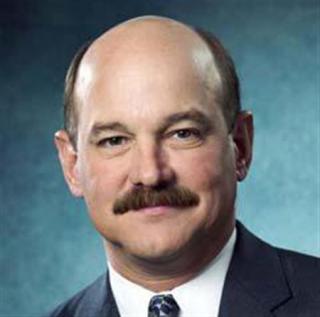
Former New York Times financial writer Roger Lowenstein wonders in his new Fortune column whether pension investments have become too complex.
Lowenstein’s thesis:
Pricey consultants have convinced many pension funds to pile into private equity, real estate and hedge funds, which don’t necessarily promise higher returns or long-term investing.
[…]
[Pension funds] have assembled portfolios that are way too complex, way too dependent on supposedly sophisticated (and high fee) investment vehicles. They have chased what is fashionable, they have overly diversified, and they have abandoned what should be their true calling: patient long-term investing in American corporations.
[…]
It’s true that the stock market doesn’t always go up. But a long-term investor shouldn’t be wary of volatility. Over the long term, American stocks do go up. And state pension systems should be the ultimate long-term investors; their horizon is effectively forever.
Lower volatility helps fund managers; they don’t like having to explain what happened in a bad year. But it is not good for their constituents. The Iowa system has trailed the Wilshire stock index over 10 years—also over five years, three years, and one year. Over time, that translates to higher expenses for employees or for Iowa taxpayers. And Iowa is typical of public funds generally.
[…]
Many hedge funds trumpet their ability to dampen volatility. Pension funds should not be in them. From 2009 to 2013, a weighted index of hedge funds earned 8% a year, according to Mark Williams of Boston University. The return on the S&P 500 was more than twice as much, and a blended 60/40 S&P and bond fund earned 14%. Granted, a small minority of hedge funds consistently beat the index. But most public pensions will not be in such superlative funds.
Lowenstein on private equity:
Private equity remains the rage. However, private equity is hugely problematic. Those confidential fees are often excessive—with firms exacting multiple layers of fees on the same investment.
Moreover, there is no reliable gauge of returns. Private equity firms report “internal rates of return.” These do not take into account money that investors commit and yet is not invested. “The returns are misleading,” says Frederick Rowe, vice chairman of the Employee Retirement System of Texas. “The professionals I talk to consider the use of IRRs deceptive. What they want to know is, ‘How much did I commit and how much did I get back?’”
Since no public market for private equity stakes exists, annual performance is simply an estimate. Not surprisingly, estimates are not as volatile as stock market prices. But the underlying assets are equivalent. A cable system or a supermarket chain does not become more volatile by virtue of its form of ownership.
The fact that reported private equity results are less volatile pleases fund managers. But the juice in private equity comes from its enormous leverage. Pension managers would be more honest if they simply borrowed money and bet on the S&P—and they would avoid the fees. And if high leverage is inappropriate for a public fund, it is no less inappropriate just because KKR is doing it.
Lowenstein ends the column with a call for pension funds to renew their focus on “long-term goals”:
With their close ties to Wall Street, pension managers tend to be steeped in the arcane culture of the market. The web site for the Teacher Retirement System of Texas refers to its “headlight system” of “portfolio alerts” and the outlook for the U.S. Federal Reserve and China.
Managers who think in such episodic terms tend to be traders, not investors. This subverts the long-term goals of retirees.
The focus on the short and medium term squanders what a pension fund’s true advantage is. You may not have thought that public funds had an advantage, but they wield more than $3 trillion and have the freedom to invest for the very long term.
Better than chase the latest “alternative,” pensions could become meaningful stewards of corporate governance—active monitors of America’s public companies. A few fund managers, including Scott Stringer, the New York City comptroller, who oversees five big funds, are moving in this direction, seeking board roles for their funds. More should do so, but that will require an ongoing commitment. It will require, in other words, that pension funds stop acting like turnstile traders and fad followers, and that they start behaving like investors.
Read the entire column here.
Photo by Victoria Pickering via Flickr CC License









